Weltenburg Abbey Church

Our first stop was at the Benedictine Abbey Church at Weltenberg, built in 1718. Father Leopold was our guide there and he offered a prayer, sang for us and ended with a blessing. It was an inspirational visit.

This is an oval church with a statue of St. George at the front, illuminated from behind.
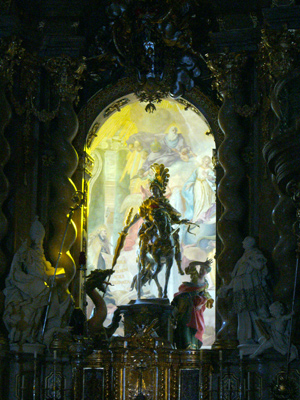
A closup of St. George slaying the dragon.
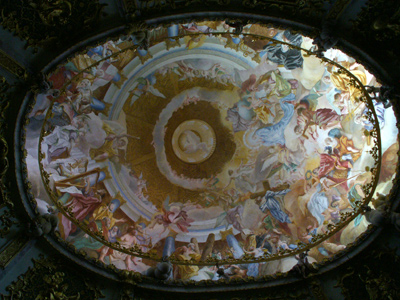
The lower part of the church was quite dark but the ceiling was bright, with the theme of the Church Triumphant in this painting.

There is an al fresco painting depicting Christopher Columbus' landfall in America, accompanied by Christianity embodied by twelve Benedictine monks led by St. Benedict and the Virgin Mary.

Since 1050, Weltenburg monks have been making Weltenberg Kloster beer to make money. As part of the tour, we were able to sample it.
Danube Gorge
As part of this optional tour, we had a ferry ride on the Danube Gorge. Our ship had left the Danube and was now on the Rhine-Main-Danube Canal.
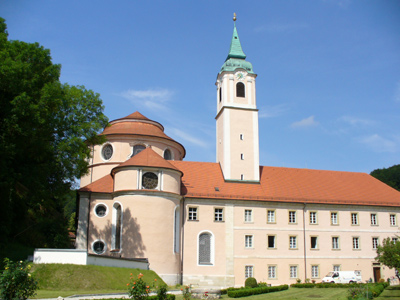
This is a view of the Weltenberg Abbey from the rear. Note the high windows which provide the light for the church ceiling.
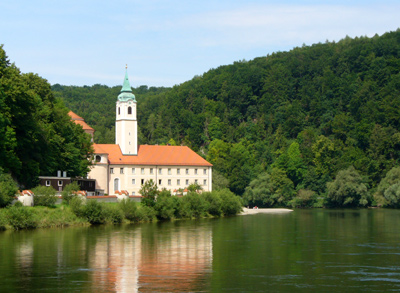
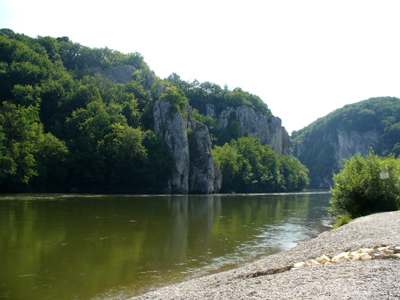
This seems peaceful, but there is quite a strong current in the gorge.
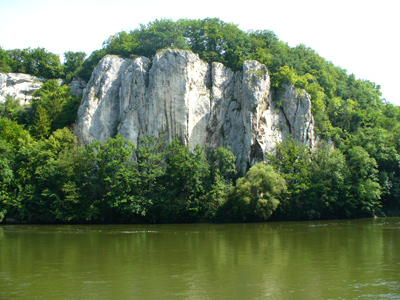
With its high cliffs, this Gorge is the river's steepest, narrowest area and is justly famous for its stunning scenery.
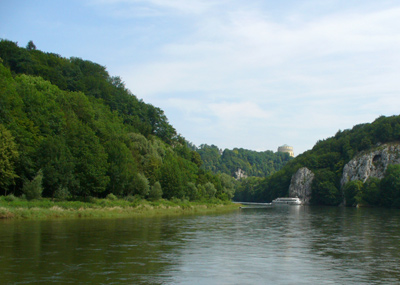
Another ferry on the river and the Hall of Liberation on the hill above.
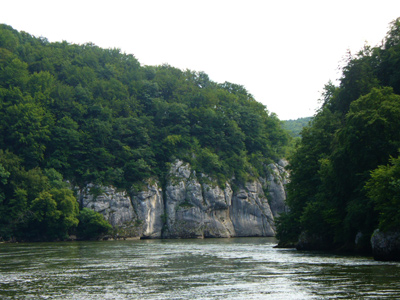
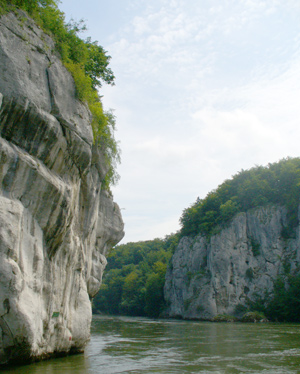
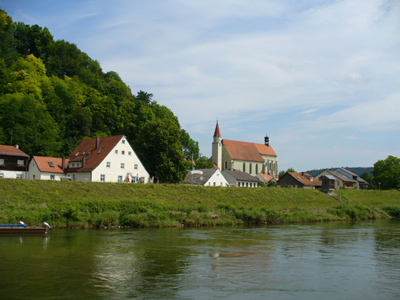
We approach our landing area in a small village.
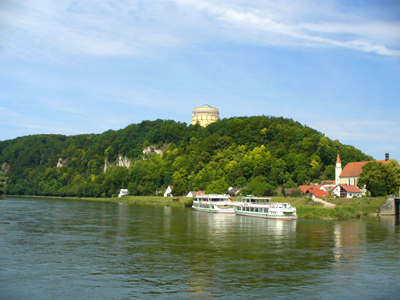
Here we see the Hall of Liberation again.
Hall of Liberation
This hall was built by King Ludwig I to commemorate victories against Napoleon during the Wars of Liberation (1813-1815) and the unification of the German tribes. Work was begun in 1842, halted in 1847 when the original architect died, and completed in 1863. 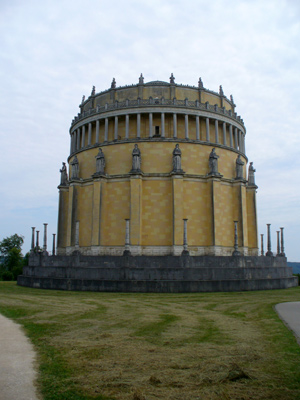
It is built in the shape of an 18-sided polygon with 18 statues of almost 20 feet tall.

A closeup of one of the statues.
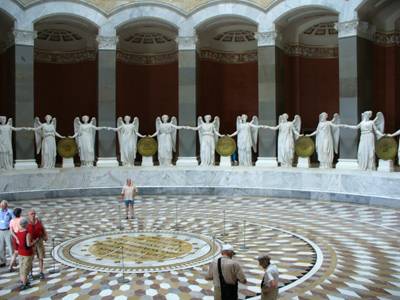
In the interior are 34 goddesses of victory, commemorating different victories.
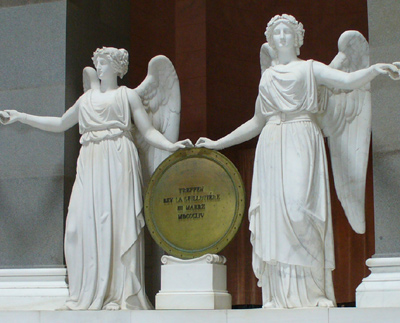
The represents a victory at La Guillotiere in March of 1814.
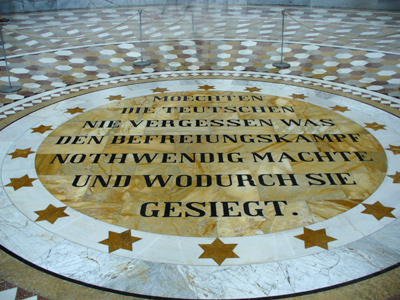
The translation of this text is "May the Germans never forget
what made the War of Liberation necessary
and what made them victorious."
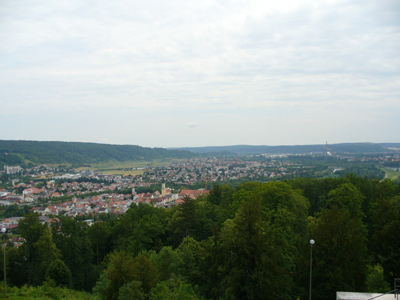
There were some spectacular views of the countryside from the monument.
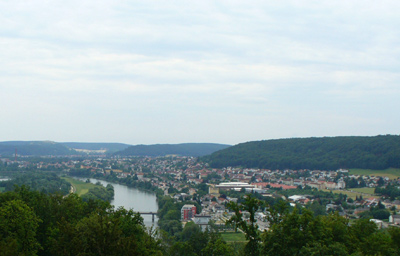
|

